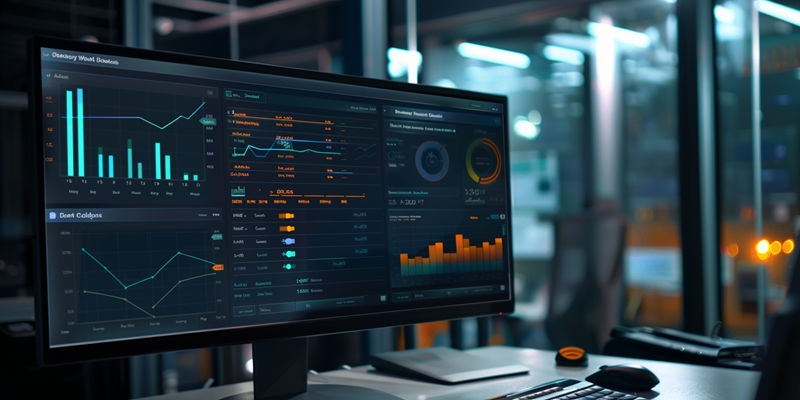In the constantly evolving domain of manufacturing and business, the tide is turning towards a more service-centric approach powered by the latest in digital technology. This transition, known as digital servitization, is not only altering the dynamic of competitive dynamics but is also introducing a new era of customer interaction and internal operations. The keystone of this monumental shift is data analytics—an indispensable tool that propels informed decision-making and streamlines operational efficiency, ultimately guiding companies toward strategic transformation.
The Nexus of Servitization and Digital Transformation
The Strategic Shift in Manufacturing
Servitization is redefining competitive boundaries, compelling manufacturers to rethink their traditional focus on products. By shifting towards service-inclusive offerings, companies are discovering new ways to engage with customers and distinguish themselves from competitors. This is particularly evident in businesses that leverage data analytics to drive their service models, offering predictive maintenance or tailored solutions. As industry trailblazers tap into this well of opportunity, they set precedents for how services can elevate the customer experience and provide sustained business value.
Understanding the Role of Data Across the Product Lifecycle
From inception to decommissioning, asset data forms the backbone of the servitization narrative. By harnessing this information, manufacturers glean pivotal insights into customer needs, facilitating smarter design and more compelling service offerings. Consider how data collected on machine performance can yield improvements in maintenance schedules or how usage patterns can direct the development of new features. The symbiology between data mastery and service enhancement cannot be overstated, as it dictates the trajectory of a business’s evolution and success.
Crafting a Servitization Roadmap Leveraging Data Analytics
Preparing for Servitization
Before a company can ride the servitization wave, much groundwork is to be done. Identifying which services resonate with clients and assessing their impact on the core business are just the starting points. Consideration must also be given to potential market demands, investment costs, and the consequences of bypassing this strategic maneuver. Partnerships and technological capabilities become central pieces of the puzzle, as they are crucial to the seamless integration and implementation of a servitization model.
Integrating Advanced Technologies
The digital era beckons with tools such as artificial intelligence and analytics that can significantly uplift the servitization strategy. By embedding these technologies into business models, companies are able to deploy revenue-oriented operations that sync with digital capabilities. The goal is to forge a comprehensive strategy that marries business ambitions with technological prowess, fortifying a company’s position in the marketplace as a versatile and forward-thinking enterprise.
Operational Advantages of Data-Driven Services
Enhanced Understanding of Markets through Analytics
Market comprehension is perhaps one of the most tangible benefits of analytics in a servitization context. By analyzing swathes of consumer data, companies can tailor their services to unparalleled degrees of personalization. These efforts aren’t in vain, as the result is often a stronger alignment with customer preferences, yielding more successful marketing efforts, greater satisfaction, and enhanced brand loyalty—all of which are instrumental for market longevity.
Leveraging Technology for As-a-Service Models
Tomorrow’s manufacturing landscape will be dominated by businesses that wisely integrate technologies like cloud computing and the Internet of Things (IoT) to bolster their service models. These technologies provide a powerful platform to deliver ‘as-a-service’ offerings, anchoring a company’s income with more predictable, service-based revenue streams. As companies navigate this labyrinth, striking the right balance between technology and strategy becomes the linchpin for a thriving, servitization-centric business model.
Data Analytics as a Competitive Differentiator
Real-time Decision Making and Profitability
In a landscape where seconds can translate into dollars, real-time data analytics emerges as a game-changer for those in the servitization arena. The ability to promptly analyze trends and act nimbly means that businesses can capitalize on opportunities more efficiently, cut down on waste, and bolster their bottom lines. Practical examples abound of organizations that have reaped the rewards of incorporating analytics into their service models, illustrating the profound impact on profitability and competitiveness.
Innovation and Improvement through Data Insights
The realm of manufacturing and business is witnessing a shift with a growing focus on a service-oriented paradigm, driven by cutting-edge digital advancements. This shift, dubbed “digital servitization,” isn’t just reshaping competitive landscapes; it’s ushering in a new era of customer engagement and revitalizing internal procedures. At the heart of this transformative wave lies data analytics. Serving as a pivotal resource, it provides a backbone for well-informed decisions and augments operational productivity. Such analytics stand at the vanguard, steering enterprises on a course toward thoughtful and strategic change. As organizations navigate through this digital servitization, they’re learning to harness data’s power to not only stay afloat but to sail ahead in the face of fierce market competition. Through its embrace, businesses are poised to craft a future where agility and acumen lead to sustainable growth and success.

